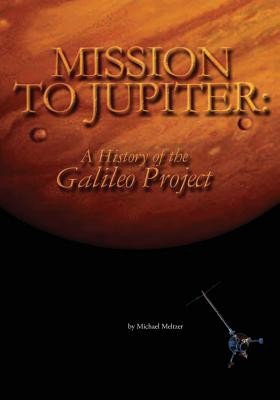
- We will send in 10–14 business days.
- Author: Michael Meltzer
- Publisher: CreateSpace Independent Publishing Platform
- Year: 2013
- Pages: 342
- ISBN-10: 1493716662
- ISBN-13: 9781493716661
- Format: 17.8 x 25.4 x 1.8 cm, softcover
- Language: English
- SAVE -10% with code: EXTRA
Reviews
Description
The Galileo mission to Jupiter explored an exciting new frontier, had a major impact on planetary science, and provided invaluable lessons for the design of spacecraft. This mission amassed so many scientific firsts and key discoveries that it can truly be called one of the most impressive feats of exploration of the 20th century. In the words of John Casani, the original project manager of the mission, "Galileo was a way of demonstrating . . . just what U.S. technology was capable of doing." An engineer on the Galileo team expressed more personal sentiments when she said, "I had never been a part of something with such great scope . . . . To know that the whole world was watching and hoping with us that this would work. We were doing something for all mankind." When Galileo lifted off from Kennedy Space Center on 18 October 1989, it began an interplanetary voyage that took it to Venus, to two asteroids, back to Earth, and finally on to Jupiter. The craft's instruments studied Jupiter's enormous magnetosphere and its belts of intense radiation. The spacecraft also sent off a planetary probe that accomplished the most difficult atmospheric entry ever attempted. After this, the craft spent years visiting Jupiter's moons and delving into their structures and properties. This book attempts to convey the creativity, leadership, and vision that were necessary for the mission's success. It is a book about dedicated people and their scientific and engineering achievements. The Galileo mission faced many significant problems. Some of the most brilliant accomplishments and "work-arounds" of the Galileo staff occurred precisely when these challenges arose. Throughout the mission, engineers and scientists found ways to keep the spacecraft operational from a distance of nearly half a billion miles, enabling one of the most impressive voyages of scientific discovery.
EXTRA 10 % discount with code: EXTRA
The promotion ends in 19d.22:53:56
The discount code is valid when purchasing from 10 €. Discounts do not stack.
- Author: Michael Meltzer
- Publisher: CreateSpace Independent Publishing Platform
- Year: 2013
- Pages: 342
- ISBN-10: 1493716662
- ISBN-13: 9781493716661
- Format: 17.8 x 25.4 x 1.8 cm, softcover
- Language: English English
The Galileo mission to Jupiter explored an exciting new frontier, had a major impact on planetary science, and provided invaluable lessons for the design of spacecraft. This mission amassed so many scientific firsts and key discoveries that it can truly be called one of the most impressive feats of exploration of the 20th century. In the words of John Casani, the original project manager of the mission, "Galileo was a way of demonstrating . . . just what U.S. technology was capable of doing." An engineer on the Galileo team expressed more personal sentiments when she said, "I had never been a part of something with such great scope . . . . To know that the whole world was watching and hoping with us that this would work. We were doing something for all mankind." When Galileo lifted off from Kennedy Space Center on 18 October 1989, it began an interplanetary voyage that took it to Venus, to two asteroids, back to Earth, and finally on to Jupiter. The craft's instruments studied Jupiter's enormous magnetosphere and its belts of intense radiation. The spacecraft also sent off a planetary probe that accomplished the most difficult atmospheric entry ever attempted. After this, the craft spent years visiting Jupiter's moons and delving into their structures and properties. This book attempts to convey the creativity, leadership, and vision that were necessary for the mission's success. It is a book about dedicated people and their scientific and engineering achievements. The Galileo mission faced many significant problems. Some of the most brilliant accomplishments and "work-arounds" of the Galileo staff occurred precisely when these challenges arose. Throughout the mission, engineers and scientists found ways to keep the spacecraft operational from a distance of nearly half a billion miles, enabling one of the most impressive voyages of scientific discovery.


Reviews